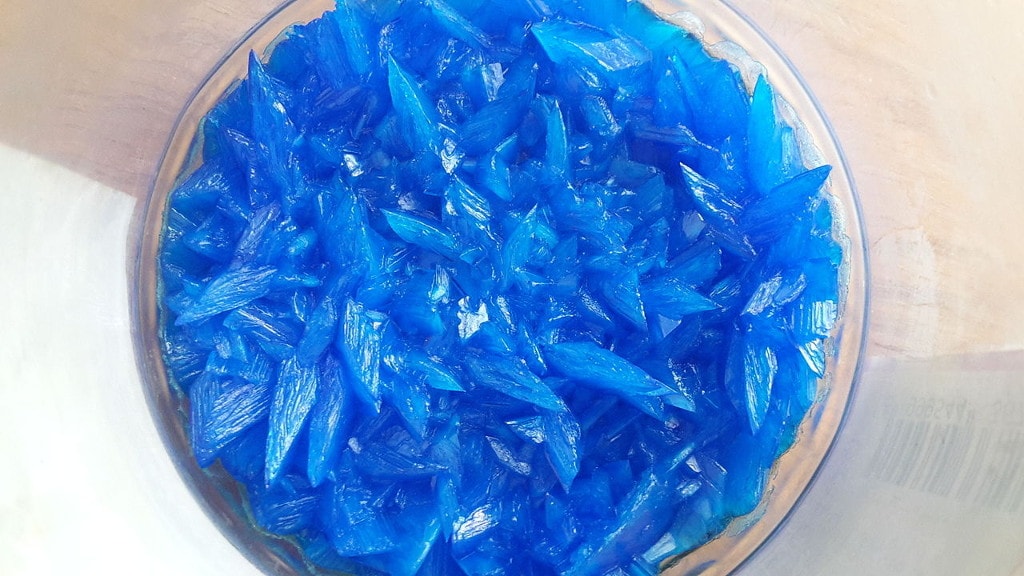ZIMSEC O Level Combined Science Notes: Experiment: Making salt:copper sulphate
Materials: Making a salt, copper sulphate
Materials: copper oxide, dilute sulphuric acid, plastic beaker, evaporating dish, filter funnel, filter paper, stirring rod, spatula/plastic teaspoon

Making copper sulphate
Method
- Pour 20cm3 dilute sulphuric acid into a beaker
- Add a small spatula load of copper oxide and stir well until it has all dissolved
- Continue adding copper oxide until no more will dissolve
- Filter the solution to remove the undissolved copper oxide
- Collect the filtrate in an evaporating dish
- Heat the filtrate in an evaporating dish until the mixture is saturated
- Place the evapourating dish with the filtrate on a window and leave for a few days
Observation/Results

The saturated filtrate. Image credit scienceprojectlab.com
- The copper oxide reacts with the dilute sulpiric acid
- This gives the impression that the copper oxide is dissolving into the acid
- When the acid is completely neutralised copper oxide will no longer dissolve
- The saturated filtrate has a bluish colour which is different from that of the acid which is colourless and the copper oxide which is black in colour
- After a few days copper sulphate crystals form in the evaporating dish once the remaining water has evapourated
Conclusion
- Bases react with acids to form water and a salt
- The equation can be written as:
- \text{base+ acid}\rightarrow\text{salt+water}
- In this case sulphuric acid reacts with copper oxide to form copper sulphate and water
- The equation can be represented as:
- \text{sulphuric acid+copper oxide}\rightarrow\text{copper sulphate+water}
- The copper sulphate has a blueish colour
To access more topics go to the Combined Science Notes page.



